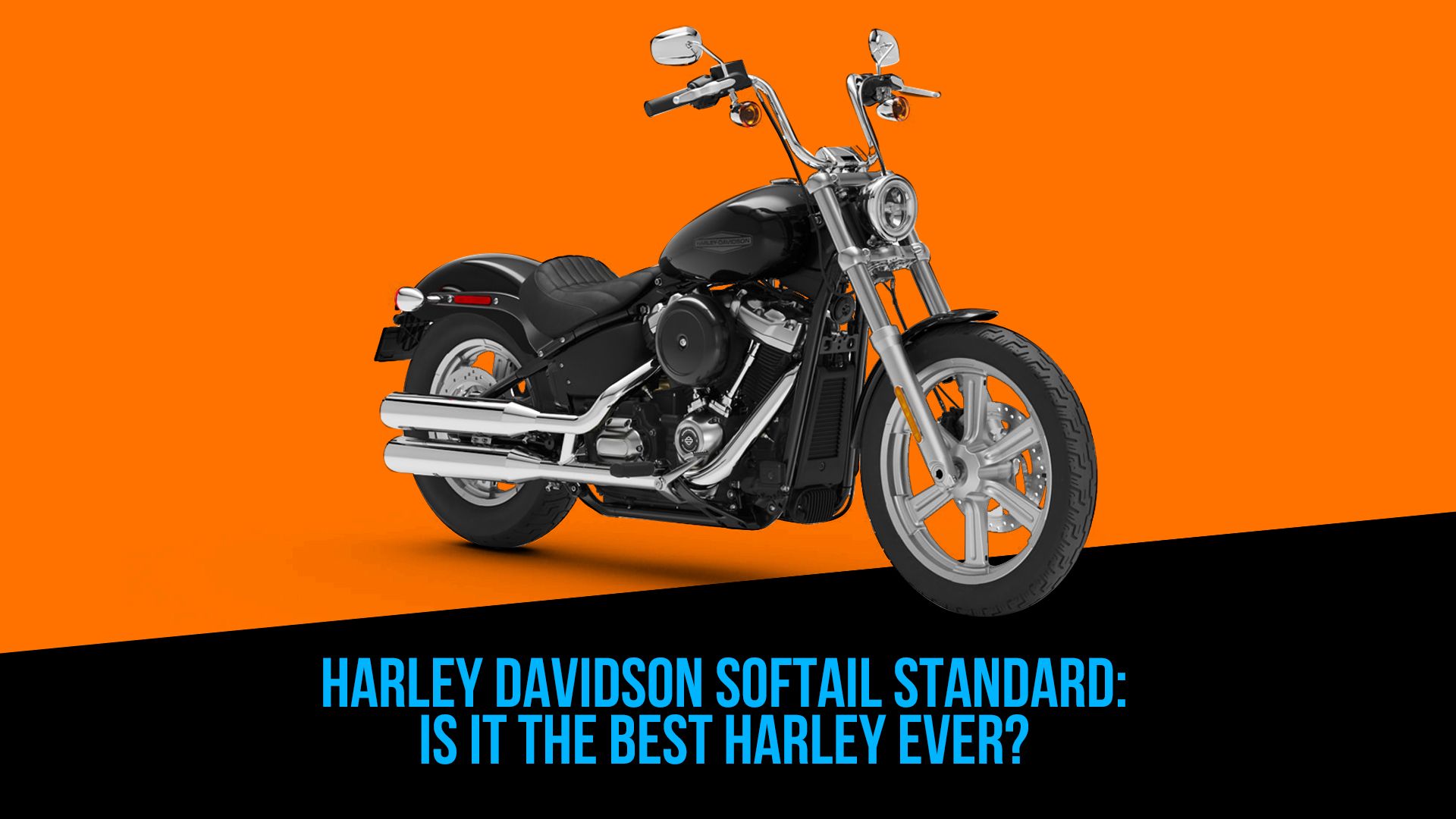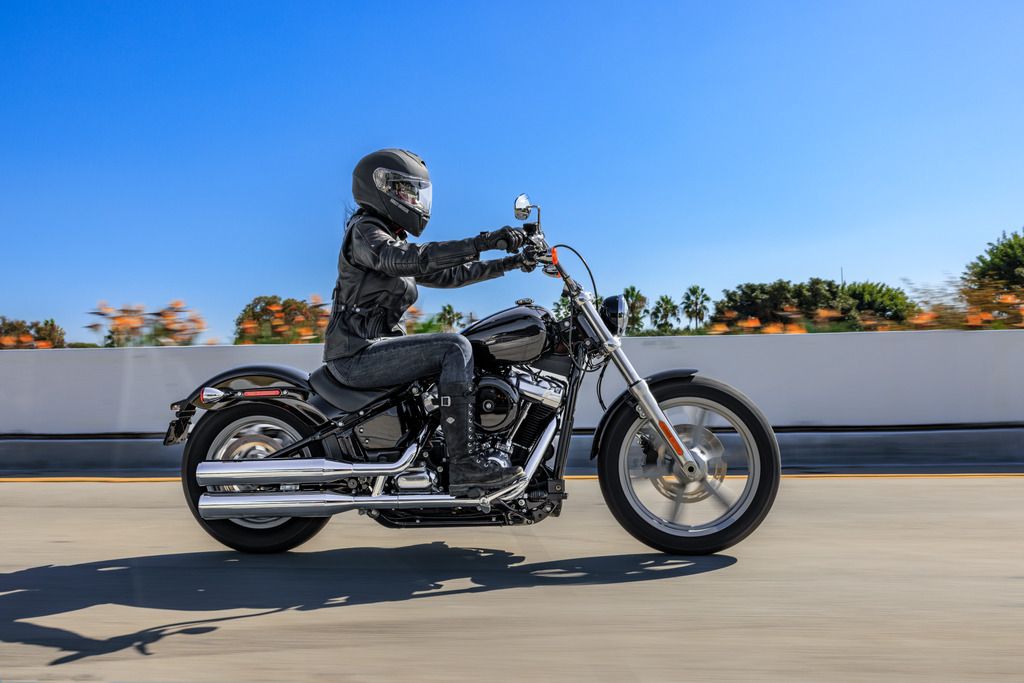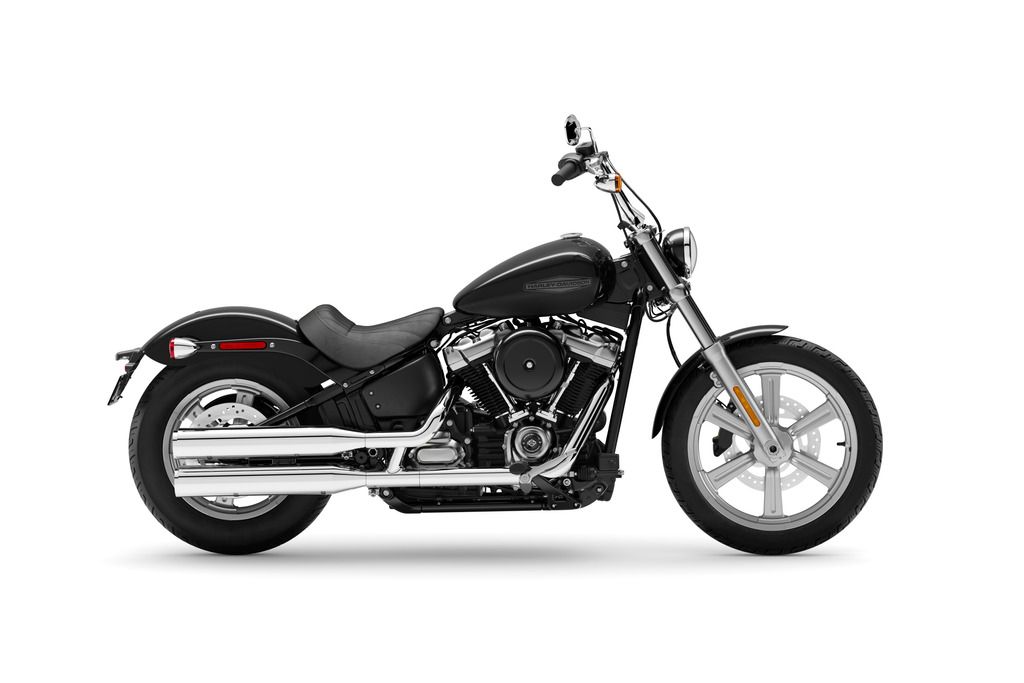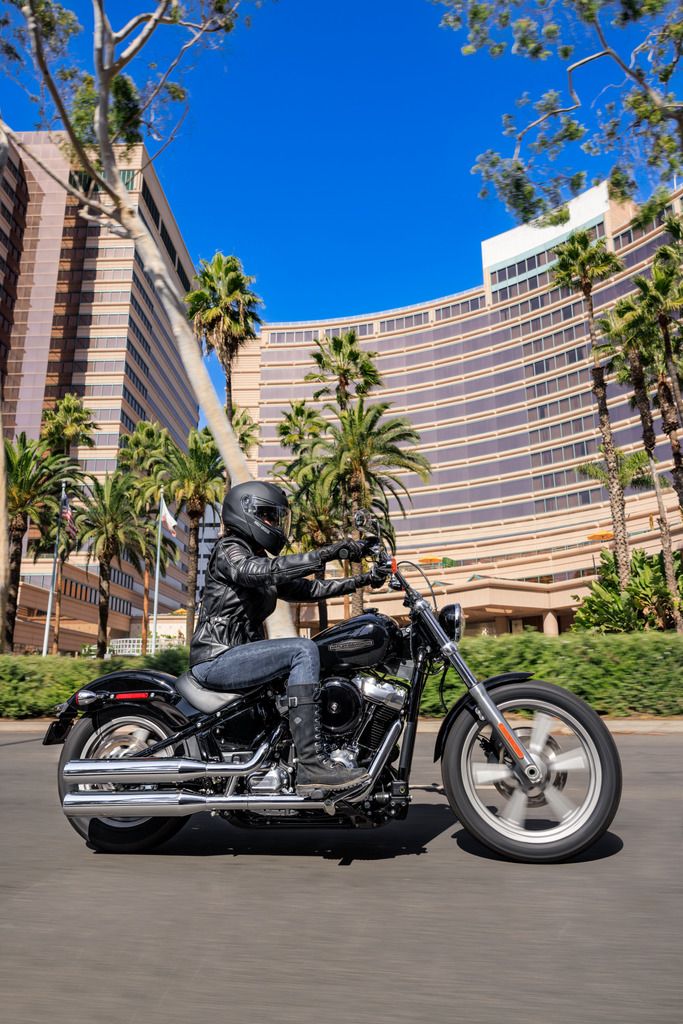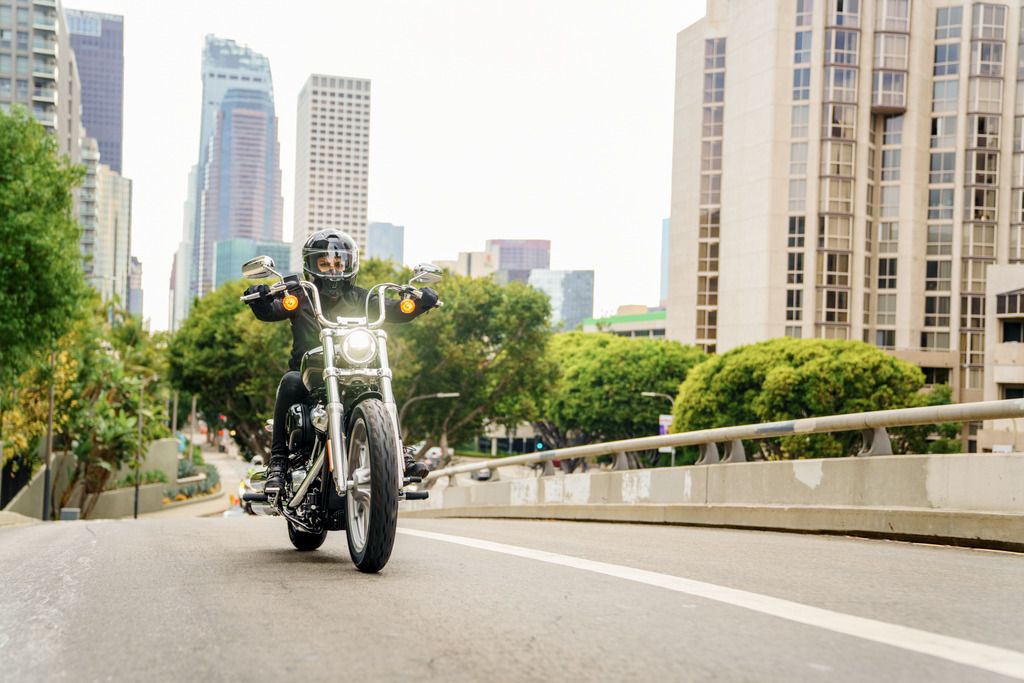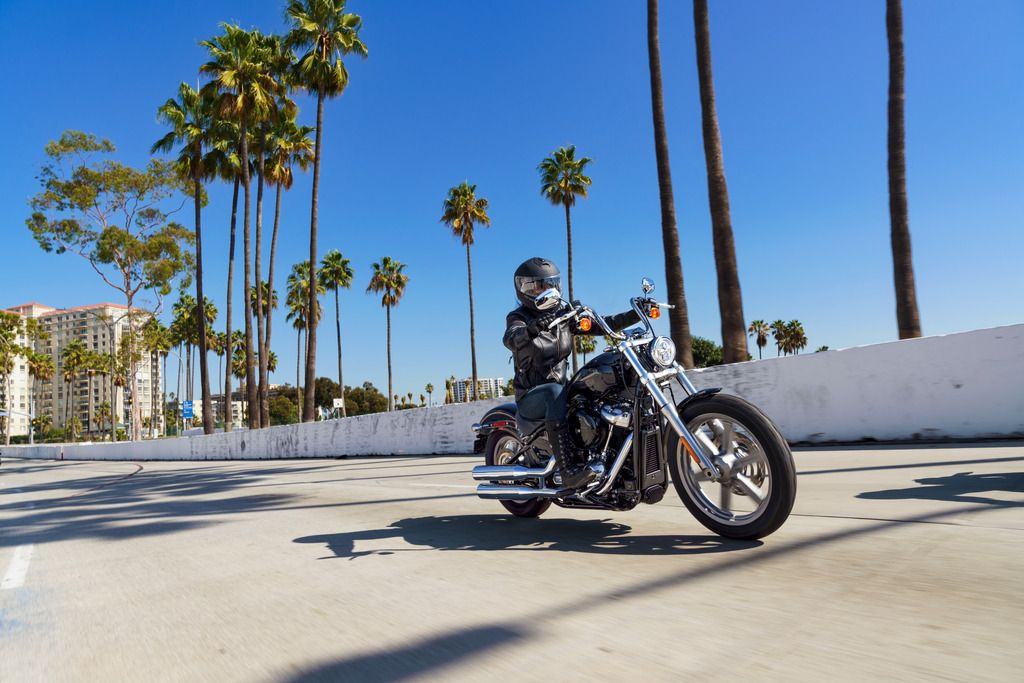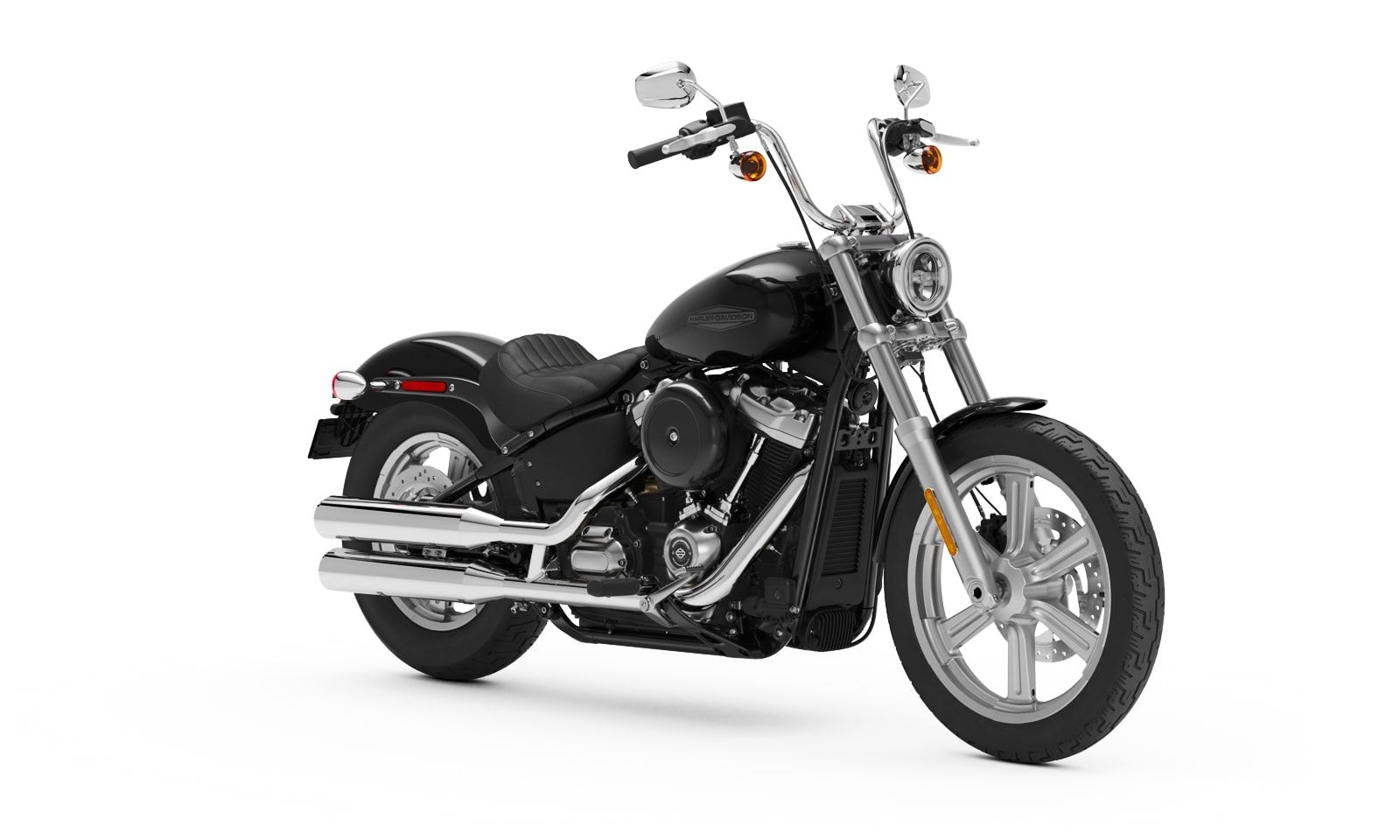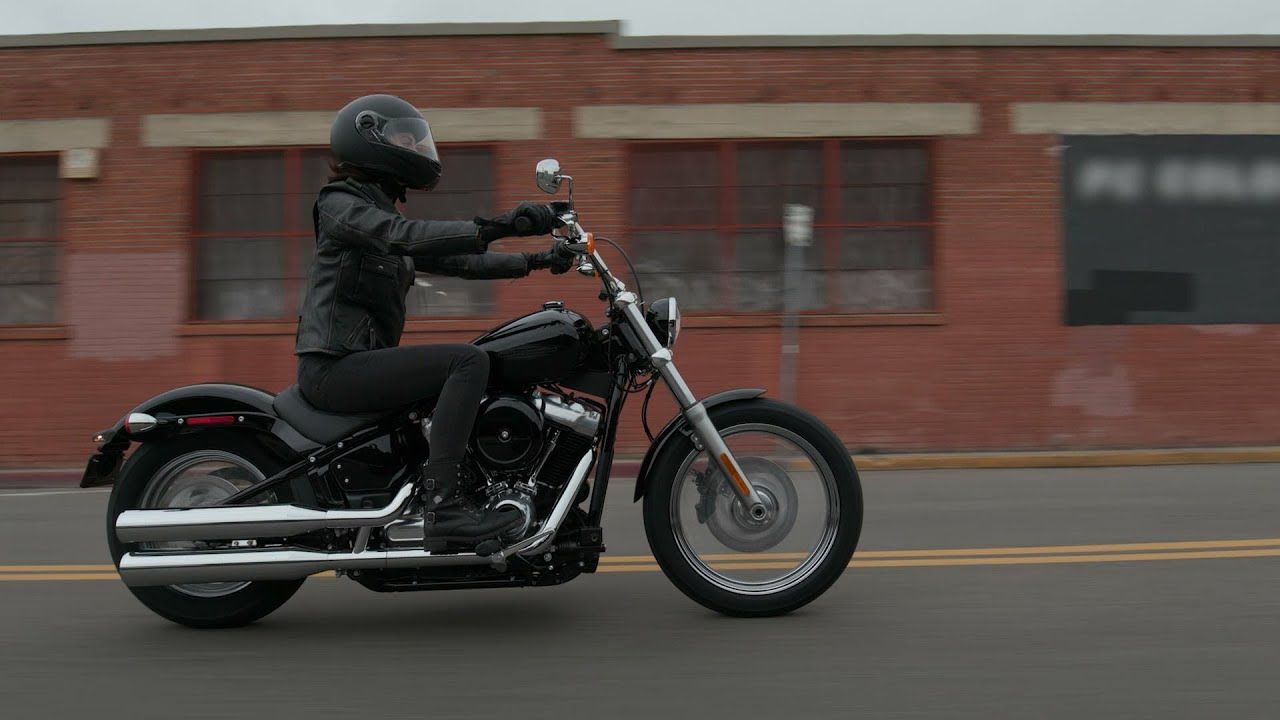Most Harley-Davidsons are big and brash, with the chrome piled on with a shovel and a huge dose of ready-made style. The Softail Standard, on the other hand, is simple to the point of being bland but, underneath, there is a lot to like about this blank canvas of a motorcycle that can be dressed up with the help of the H-D parts catalog.
Huge, Torquey Engine
When it first arrived back in 2016, the new Milwaukee Eight engine - only Harley’s ninth new-design ‘Big Twin’ engine in its history - might have seemed like a backward step due to reverting to the single crankshaft-driven camshaft from the overhead cams of the Twin Cam engine, but the cylinder head got four valves per cylinder for the first time. A counter-rotating balancer shaft keeps things nice and smooth and that fitted to the Softail Standard is of 107 cubic inch displacement.
The engine’s party piece is the torque available from only 2,500rpm, meaning that you can leave the gear lever alone once you’re in fifth or sixth gear and simply ride on a tidal wave of torque.
The gearbox is super clunky, in line with all Harleys, but it feels as if it will never break. The first to fourth gears are relatively close together for punchy acceleration, while the fifth and sixth gears are wider spaced for more relaxed cruising.
Stock Exhaust Is Quiet, But Not Too Quiet
A lot of bikes are ruined by a too-loud exhaust that makes long-distance riding painful. In the world of Harley Davidson, stock exhausts are apt to be on the quiet side - no bad thing - and it is up to the owner to change that with recourse to the parts catalog.
The Softail Standard has that unmistakable ‘potato-potato’ sound, but nicely muffled. The sound is full of rich bass notes which make it a blast to ride through city streets banked with tall buildings but won’t offend anyone unduly. On the open road, you know you’re riding a Harley v-twin engine but your ears won’t protest.
Good Vibrations
With two large pistons and a long stroke, the 107-cubic inch (1,746cc) vibrates, but thanks to the balancer shafts inside the engine, not uncomfortably.
At low revs, the vibes are minimal through the foot pegs and handlebars: just enough to let you know you’re riding a Harley, in case you forgot! At the mid-point of the available rev range and where you will be spending most of your highway cruising, the engine is commendably smooth but things get more pronounced the higher you rev. As the torque curve Peters out long before you get to the upper rev limits, there is no reason to spend any time up there, so it’s not an issue.
Brakes Not Up To The Rest of the Bike
Maybe it's for reasons of economy or perhaps it’s to maintain the traditional look, but the single 300mm disc up front needs a hefty pull on the lever to haul this hefty 650-pound motorcycle to a halt safely or quickly.
Both disc and four-piston caliper are solidly mounted which doesn’t help, although even the rear 292mm disc at the back, with a floating two-piston caliper - normally the stronger brake on a cruiser - isn’t powerful enough.
There’s inadequate bite and the feel is wooden, not something you expect from an expensive motorcycle. Even ABS doesn’t come as standard, although it is available as an extra-cost option.
The Ergonomics Are Just About Right
Normally, a set of mini ape hanger ‘bars doesn’t do much for out and out riding comfort but, somehow, the Softail Standard’s riding position isn’t too extreme.
The foot pegs are set forward so taller riders’ knees aren’t too bent, thanks to the low seat, and the ‘bars, while tall riders don’t require anything other than an outstretched arm with the hands just below shoulder height, which helps in reducing fatigue in the hands as blood can still get to them!
The seat is relatively hard which makes it better for longer rides and it also offers good support whether accelerating, braking or cornering.
Handling
Showa supplies the forks and rear shock so they should be up to the job. Luckily, they are! Even with the old-fashioned non-inverted forks (they look right, at least) the suspension controls the weight of the bike nicely and seems well set up to give a sportier ride than you might expect.
This is helped by the relatively skinny tires front and back that make it easy to tip the Softail into corners without resorting to too much leverage on the wide and tall bars. It also makes it easy to thread through traffic.
The weight might be on the heavy side (650 pounds, don’t forget), but it is worn low down and distributed relatively equally front to back so you don’t really feel it once on the move and even performing a foot-up u-turn is easy.
Don’t Expect Advanced Electronics
This is something that burdens the whole Harley range so it’s not a criticism of the Softail alone, but Harley really needs to up its game in terms of the electronic rider aids, especially if they are charging a premium price.
Against less-expensive but better-equipped opposition, the Harley Davidson Softail Standard looks positively old-fashioned, which is just not acceptable anymore. ABS is an option (why?) but traction control is nowhere to be seen, which is strange as with all that torque ready to spin up the rear wheel, TC would have been an obvious addition.
Another huge negative is the ridiculously small LCD ‘dash’, mounted on the handlebar clamp. It is all but unreadable in any light and while there is a row of warning lights just below the display, they are also so small as to be invisible in bright light. Yes, it does clean up the looks of the Softail Standard enormously but, as a safety feature, it’s rubbish.
However, It Looks Great
If you want a stripped-down cruiser, with no frills and really nice styling touches that are admirably subtle, then you could do much worse than the Softail Standard. It really is from the old-school: two wheels, an engine, a seat, and a pair of handlebars and it’s all the better for it.
The quality is right up there as well, although that’s what you’d expect from a motorcycle that costs $13,949 as it stands. Start poking into the parts catalog which such a blank canvas encourages, and you could find yourself adding 50-percent of the purchase price before you can say ‘where are the tassels?’
Oh, and in the immortal words of Henry Ford, you can have it in any color, as long as it’s black!
Rivals
Harley Davidson used to have this class of motorcycle all to itself but the American market being what it is, it’s too important for other manufacturers to ignore.
Triumph and Ducati are the two European manufacturers with products that appeal to the same market, with the Bonneville Bobber and the Diavel respectively. While the Triumph is priced just about the same as the Harley, the Ducati is about $7,000 more.
However, both are much better equipped than the Harley and, subjectively, much better motorcycles as well, especially in the suspension, braking, electronics, and handling departments.
The closest American rival (not from Harley’s own line-up!) has to be the Indian Chief Bobber, which comes in a bit more expensive but has a slightly better specification. Indian could also put up the Scout Bobber as a rival, which is about $1,000 cheaper than the Softail Standard.
The Perfect Recipe
For many, there is nothing that can touch a Harley Davidson and it’s easy to see why, looking at the Softail Standard: it might be simple and unadorned with too much chrome and baubles but the correct ingredients are all there: big, torquey V-twin engine, laid-back, stripped-down style, good looks and that name on the tank.
Yes, it’s flawed, but that really shouldn’t stop you from taking a good hard look before deciding because, at its heart, it’s an honest motorcycle - it does what it says on the tin and, in time, you can customize it to your heart’s desire and refresh its looks to stay in line with what you envisage.
FAQ
Q: What years did Harley make the Softail Standard?
The Softail as a model was announced in 1984. It is still in production today.
Q: Is a Softail Standard a good starter bike?
Yes, it would. It’s got a low seat, low center of gravity, and easily accessible power without being too over the top.
Q: What is the difference between a Softail Standard and Custom?
The original Softail Custom had a blacked-out engine with chrome covers, more chrome overall on the bike and a 21-inch front wheel.
Q: What years did Harley make the Softail Standard?
The Softail as a model was announced in 1984. It is still in production today.
Q: Is a Softail Standard a good starter bike?
Yes, it would. It’s got a low seat, low center of gravity, and easily accessible power without being too over the top.
Q: What is the difference between a Softail Standard and Custom?
The original Softail Custom had a blacked-out engine with chrome covers, more chrome overall on the bike and a 21-inch front wheel.

